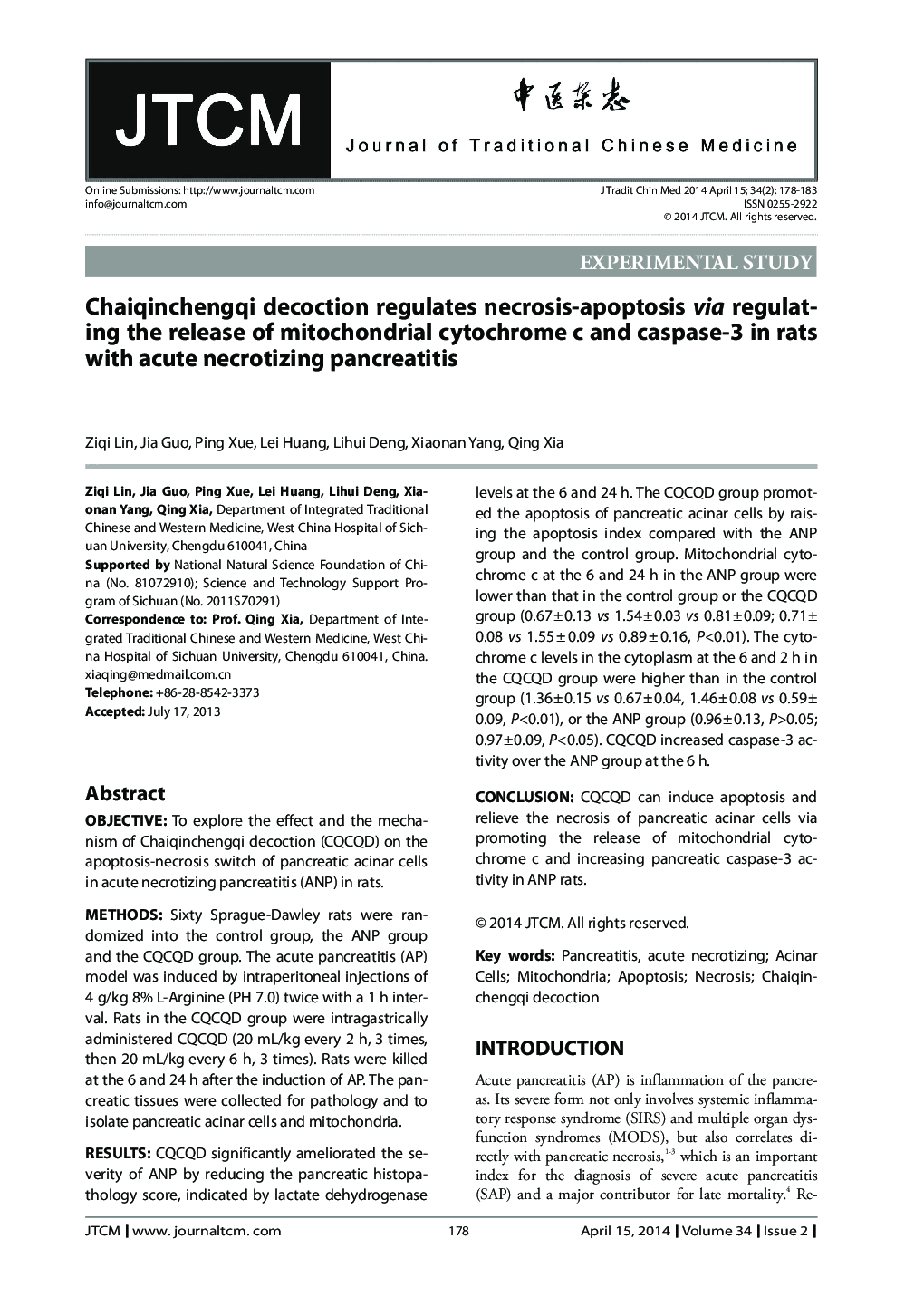| Article ID | Journal | Published Year | Pages | File Type |
|---|---|---|---|---|
| 4201166 | Journal of Traditional Chinese Medicine | 2014 | 6 Pages |
ObjectiveTo explore the effect and the mechanism of Chaiqinchengqi decoction (CQCQD) on the apoptosis-necrosis switch of pancreatic acinar cells in acute necrotizing pancreatitis (ANP) in rats.MethodsSixty Sprague-Dawley rats were randomized into the control group, the ANP group and the CQCQD group. The acute pancreatitis (AP) model was induced by intraperitoneal injections of 4 g/kg 8% L-Arginine (PH 7.0) twice with a 1 h interval. Rats in the CQCQD group were intragastrically administered CQCQD (20 mL/kg every 2 h, 3 times, then 20 mL/kg every 6 h, 3 times). Rats were killed at the 6 and 24 h after the induction of AP. The pancreatic tissues were collected for pathology and to isolate pancreatic acinar cells and mitochondria.ResultsCQCQD significantly ameliorated the severity of ANP by reducing the pancreatic histopathology score, indicated by lactate dehydrogenase levels at the 6 and 24 h. The CQCQD group promoted the apoptosis of pancreatic acinar cells by raising the apoptosis index compared with the ANP group and the control group. Mitochondrial cytochrome c at the 6 and 24 h in the ANP group were lower than that in the control group or the CQCQD group (0.67±0.13 vs 1.54±0.03 vs 0.81±0.09; 0.71±0.08 vs 1.55 ± 0.09 vs 0.89 ± 0.16, P<0.01). The cytochrome c levels in the cytoplasm at the 6 and 2 h in the CQCQD group were higher than in the control group (1.36±0.15 vs 0.67±0.04, 1.46±0.08 vs 0.59± 0.09, P<0.01), or the ANP group (0.96±0.13, P>0.05; 0.97±0.09, P<0.05). CQCQD increased caspase-3 activity over the ANP group at the 6 h.ConclusionCQCQD can induce apoptosis and relieve the necrosis of pancreatic acinar cells via promoting the release of mitochondrial cytochrome c and increasing pancreatic caspase-3 activity in ANP rats.
